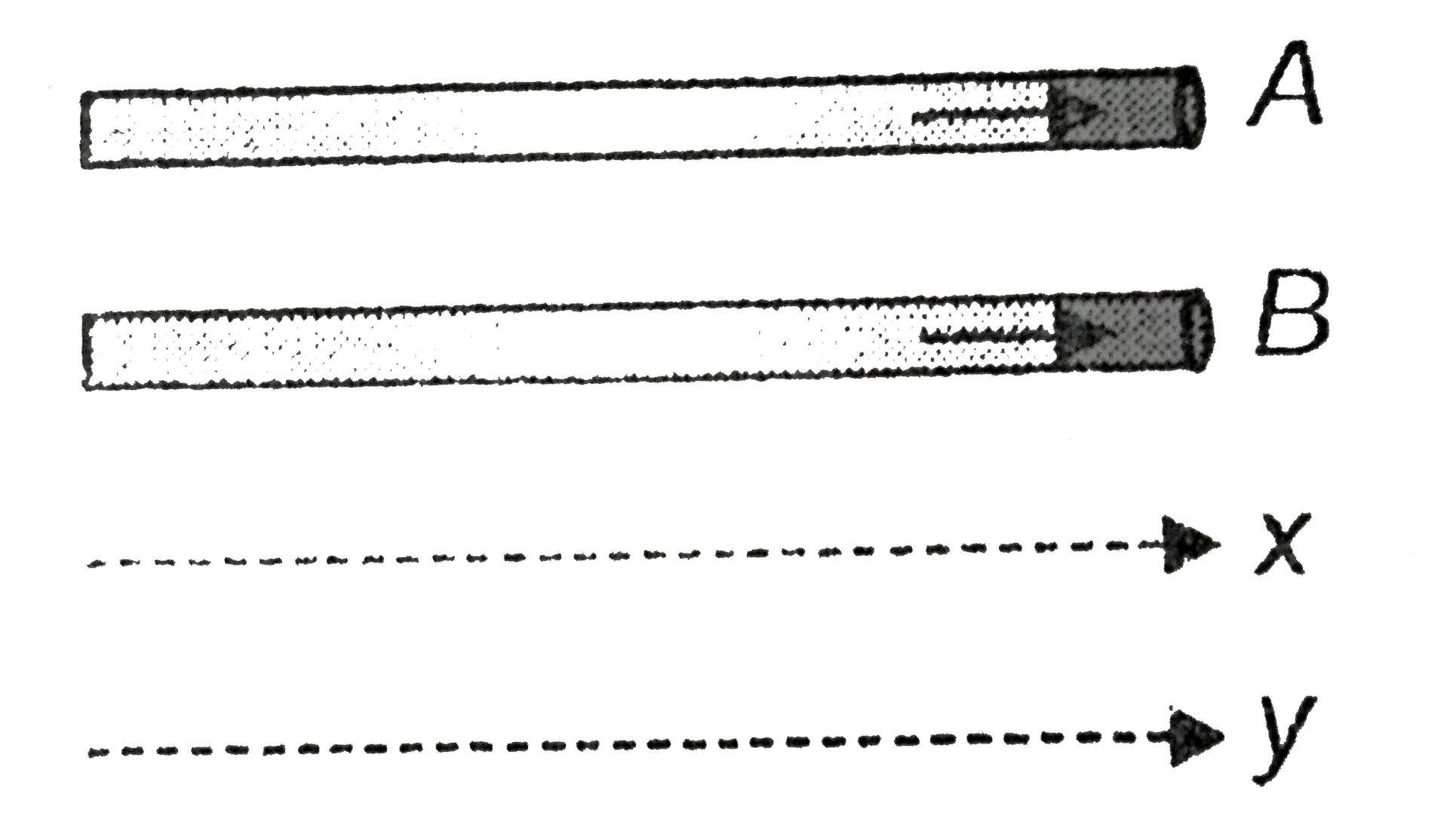As polaroid examines two adjacent plane polarised beam A and B whose planes of polarisation are mutually perpendicular. In the first position of the analyser, beam B shows zero intensity. From this position a rotation 30∘ shows that thebeams have same intensity. The ratio of intensity of the two beam IZ&IB
1
13
3
32
The correct Answer is:B
Step by step video, text & image solution for As polaroid examines two adjacent plane polarised beam A and B whose planes of polarisation are mutually perpendicular. In the first position of the analyser, beam B shows zero intensity. From this position a rotation 30^(@) shows that thebeams have same intensity. The ratio of intensity of the two beam I_(Z) & I_(B) by Physics experts to help you in doubts & scoring excellent marks in Class 12 exams.
Updated on:21/07/2023Topper's Solved these Questions
- WAVE OPTICS BOOK - MOTIONCHAPTER - WAVE OPTICS EXERCISE - EXERCISE - 4 (Level - II) Previous Year | JEE Main
16 Videos
- WAVE OPTICS BOOK - MOTIONCHAPTER - WAVE OPTICS EXERCISE - EXERCISE - 3 (Level - II) (Subjective | JEE Advanced)Section C,D - Other Experiment + YDSE thin Film
2 Videos
- WAVE MOTION BOOK - MOTIONCHAPTER - WAVE MOTION EXERCISE - Exercise - 3 Section - B (Previous Years Problems)
7 Videos
- WAVESBOOK - MOTIONCHAPTER - WAVESEXERCISE - EXERCISE -4 (Level -II) (previous year JEE Advanced)
10 Videos
Similar Questions
Two 'crossed' polaroids A and B are placed in the path of a light-beam. In between these, a third polaroid is C is placed whose polarisation axis makes an angel θ with a polarisation axis of the polaroid A. If the intensity of light emerging from the poloaroid a is Io then show that the intensity of light emerging from polaroid B will be 14Iosin2θ.
View SolutionUnplarised light falls on two polarising sheets placed one on the top of the other what must be the angle between the characteristic directions of the sheets if the intensity of the transmitted light is (a) one-third of the maximum intensity of the transmitted beam (b) one third of the intensity of the incident beam.
View Solution
Knowledge Check
Two beams, A and B, of plane polarised light with mutually perpendicular planes of polarisation are seen through a polarised light with mutually perpendicular planes of polarisation are seen through a polaroid. From the position when the beam A has maximum intensity (and beam B has zero intensity). a rotation of Polaroid through 30∘ makes the two beams appear equally bright. If the intiial intensities of the two beams are IAandIB respectively, then IA/IB equals :
A1/3B3C3/2D1Two beams A and B, of plane polarized light with mutually perpedicular planes of polarization are seen through a polaroid. From the position where the beam A has maximum intensity and the other beam B has zero intensity , the polaroid is rotated through 30∘ making the two beams appear equally bright. If the initial intensities of the two beams are IA and IB0 respectively, then IAIB equals
A2B3/2C1D1/3Two beams A and B, of plane polarized light with mutually perpendicular planes of polarization are seen through a polaroid. From the position when the beam a has maximum intensity (and beam B has zero ntensity), a rotation of polaroid through 30∘ makes the two beams appear equally bright. If the initial intensities of the two beams are IA and IB respectively, then IAIB equals:
A3B32C1D13
A partially plane polarised beam of light is passes thorugh a polaroid. Show graphically the variation of transmitted light with angle of rotation of polaroid.
View SolutionA and B are two conductors carrying a current i in the same direction x and y are two electron beams moving in the same direction. There will be

View SolutionA plane polarized beam of intensity I is incident on a polariser with the electric vector inclined at 30∘ to the optical axis of the polariser passes through an analyzer whose optic axis is inclined at 30∘ to that of polariser. Intensity of light coming out of the analyzer is

View SolutionAn upolarised beam of intensity 2a2 passes through a thin polarioid. Assuming zero absorption in the polariod, the intensity of emergent plane polarised light is
View SolutionThe polaroids are placed in the path of unpolarized beam of intensity I0 such that no light is emitted fromthesecond polarid. If a third polaroid whose polarization axis makes an angle θ with the polarization axis of first polaroid, is placed between these4 polariods then the intensity of light emerging from the last polariod will be
View Solution
